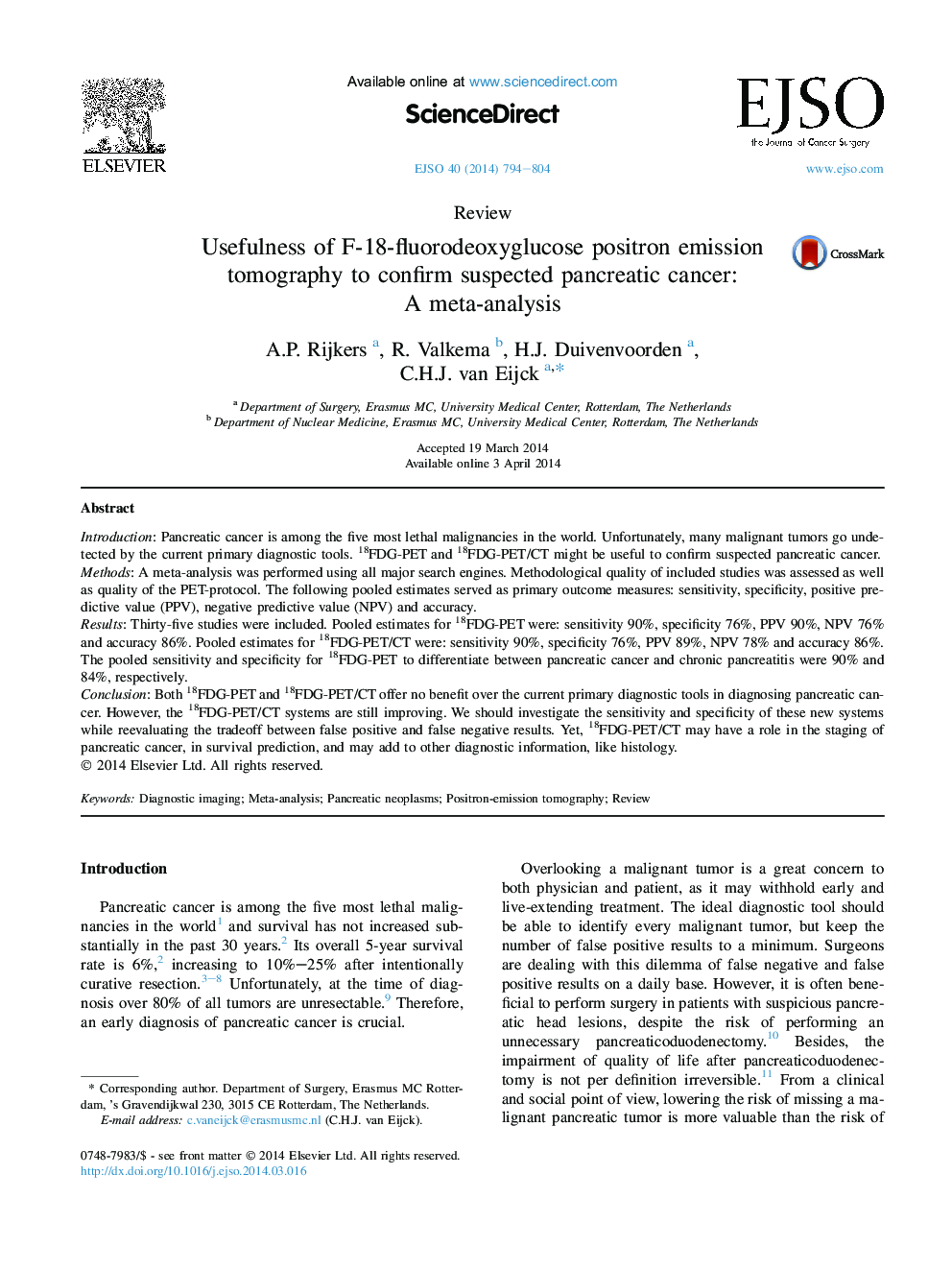| Article ID | Journal | Published Year | Pages | File Type |
|---|---|---|---|---|
| 3985228 | European Journal of Surgical Oncology (EJSO) | 2014 | 11 Pages |
IntroductionPancreatic cancer is among the five most lethal malignancies in the world. Unfortunately, many malignant tumors go undetected by the current primary diagnostic tools. 18FDG-PET and 18FDG-PET/CT might be useful to confirm suspected pancreatic cancer.MethodsA meta-analysis was performed using all major search engines. Methodological quality of included studies was assessed as well as quality of the PET-protocol. The following pooled estimates served as primary outcome measures: sensitivity, specificity, positive predictive value (PPV), negative predictive value (NPV) and accuracy.ResultsThirty-five studies were included. Pooled estimates for 18FDG-PET were: sensitivity 90%, specificity 76%, PPV 90%, NPV 76% and accuracy 86%. Pooled estimates for 18FDG-PET/CT were: sensitivity 90%, specificity 76%, PPV 89%, NPV 78% and accuracy 86%. The pooled sensitivity and specificity for 18FDG-PET to differentiate between pancreatic cancer and chronic pancreatitis were 90% and 84%, respectively.ConclusionBoth 18FDG-PET and 18FDG-PET/CT offer no benefit over the current primary diagnostic tools in diagnosing pancreatic cancer. However, the 18FDG-PET/CT systems are still improving. We should investigate the sensitivity and specificity of these new systems while reevaluating the tradeoff between false positive and false negative results. Yet, 18FDG-PET/CT may have a role in the staging of pancreatic cancer, in survival prediction, and may add to other diagnostic information, like histology.
